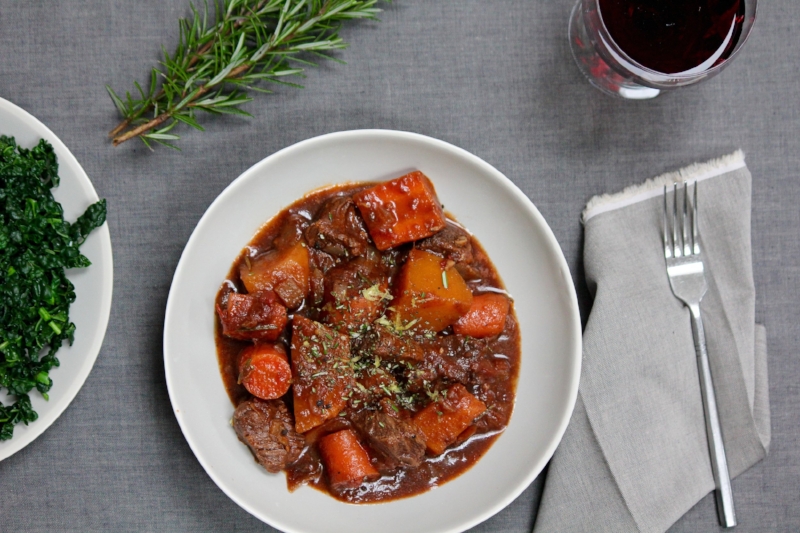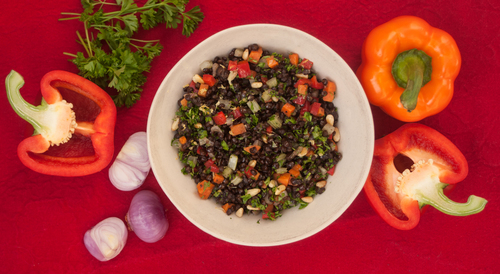Ingredients
1 tbsp light olive oil
2 onions, peeled and roughly chopped
3 garlic cloves, peeled and thinly sliced
600g grass-fed beef, cubed (ask your butcher for a cut suitable for stewing)
1 swede, peeled and cut into chunks
2-3 carrots, scrubbed and cut into chunks
1 star anise
3 sprigs of rosemary, 2 on the stalk, 1 leaves picked and finely chopped
2 bay leaves
1 tsp cumin
1 tin chopped tomatoes
1 tbsp tomato puree
175ml red wine (optional, if not using add more stock)
600ml beef stock
Salt and pepper
½ lemon zest
Method
Preheat the oven to 150°c / gas mark 2
Heat the olive oil in a lidded casserole pan, add the onions and sauté gently until softened (about 5 mins), then add the garlic and sauté for a further minute or 2
Add all the other ingredients, except the chopped rosemary and lemon zest, and bring to the boil
Put the lid on and transfer to the oven to cook for about 2-2½ hours, if you are going out you could cook it for longer just turn the oven down to 120°c and it will take around 4 hours. If the meat is not tender cook it for a bit longer.
Just before you serve it, sprinkle the chopped rosemary and lemon zest over for additional flavour.
Serve in bowls so you can enjoy the delicious gravy and it goes well with leafy greens like kale or cavolo nero.
Why is beef good for me?
Beef is a great source of B12 and iron, both of which are harder to obtain in sufficient amounts on vegetarian and especially vegan diets. B12 is crucial for maintaining healthy nerve function and is needed for DNA and RNA production. Iron is a key component of red blood cells which transports oxygen. It facilitates regulation of cell growth and helps build enzymes for overall health.
Beef also contains good levels of other minerals including selenium and zinc, which are important for the immune system, as well as B6, riboflavin (vitamin B2) and niacin (vitamin B3) all important for energy production.
Grass-fed beef
Grass-fed beef has a number of advantages over grain-fed beef including being:
Lower in total and saturated fat
higher in omega-3 fats
Higher in conjugated linoleic acid (CLA) which is a fatty acid that has antioxidant properties.
Higher in vitamins and minerals, as grazing on a natural diet is more nutrient dense for the cows.
Organic, grass-fed beef is more expensive, but by buying cheaper cuts and slow cooking it you get all the benefits for less cost.
As well as having these benefits for our health raising cattle on pasture is better for the environment too! One of the reasons for this is because much of the soya imported to the UK to feed farm animals is grown on cleared forest land. In addition grazing animals give nutrients back to the soil via their dung and cattle allowed to forage and eat their natural pasture diet tend to be healthier and happier than those kept indoors in cramped conditions and fed an unnatural diet.
Benefits of Swede
Swede, also known as rutabaga, neep or Swedish turnip, is a root vegetable that belongs to the cabbage family. It makes a good alternative to potatoes often used in stews like this. Swede is a good source of vitamin C and betacarotene and is lower in carbohydrate and higher in nutrients and fibre than white potatoes. Swede taste sweet and work well with the rich meaty flavours of the stew.
Swede is also delicious boiled and mashed, either on its own or with other root vegetables like carrots and celeriac.






